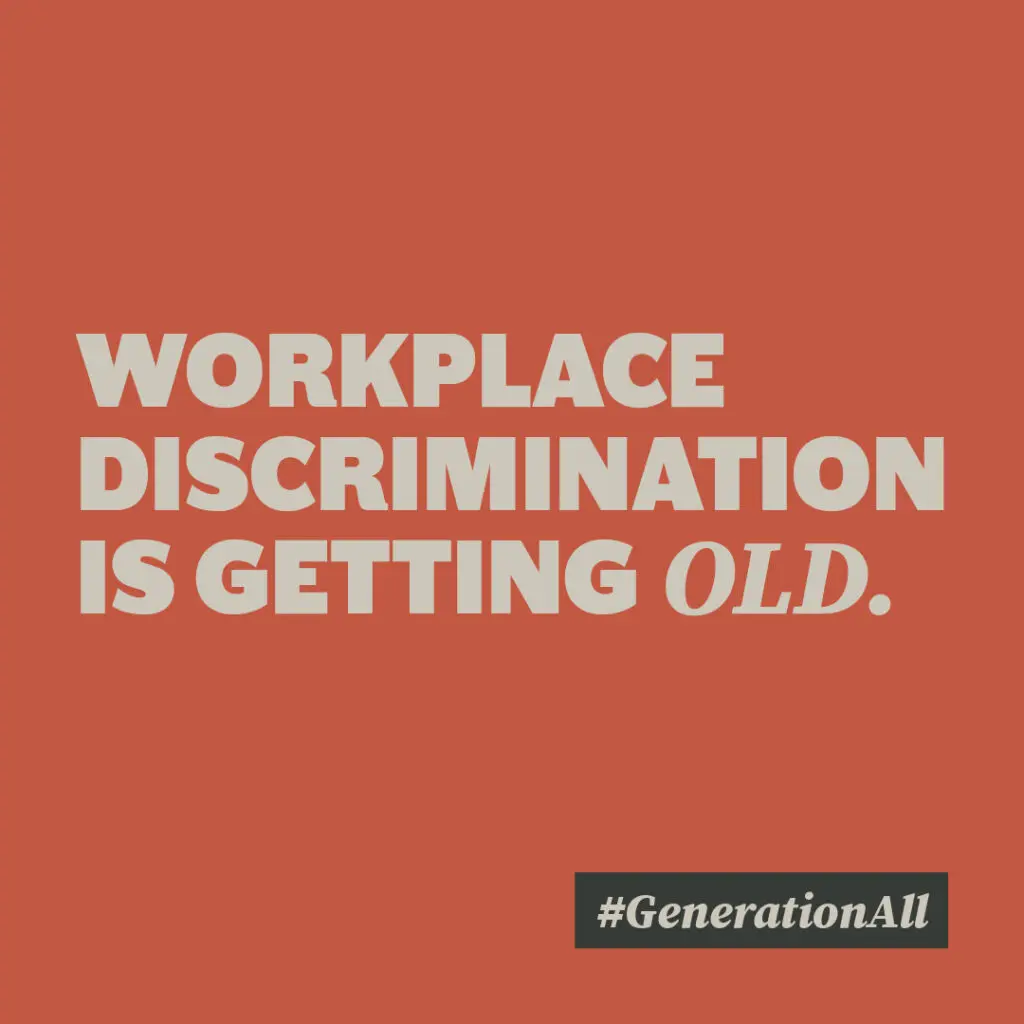How to effectively communicate with a multigenerational workforce
By Sally Pritchett
CEO
How can you help your communications resonate with a multigenerational workforce?
In today’s world, people are living and working for longer. For the first time in history, five generations are currently in the workforce, each with their own preferred ways of working and communicating.
While a multigenerational workforce brings diverse skills, experiences and perspectives, it also presents challenges – one of which is communication. While it’s important not to make assumptions and remember everyone has their own preferences, there are noticeable differences between each generation’s communication style. For example, Baby Boomers typically prefer a balance between email, phone calls and face-to-face communications, whereas Gen Z typically prefer direct personal communication and short, digestible digital messages.
With each generation valuing different communication styles, ensuring everyone feels informed, heard, and engaged is crucial. But as a communicator, what can you do to help your communications resonate with a multigenerational workforce?
Use various communication channels
Consider the different communication channels available to you and how you can use these to reach employees better. For example, if you are communicating a company-wide update via email, could you share this on other internal channels too? If appropriate, condense your email down and share via Teams or your internal social channel as well to help keep everyone informed.
Give employees flexibility on how they communicate with you
When it comes to communicating with employees, it’s not just one-sided – you should give colleagues the opportunity to share their thoughts, provide feedback, and raise concerns in ways that they feel comfortable. Where possible, consider offering employees different ways to communicate with you. For example, if you’re asking employees to contribute their ideas on a project during a meeting, you could also let them share their thoughts via email afterwards.
Balance digital and in-person communications
Using the right balance of digital and in-person communications can help you better engage employees with different preferences and ways of working. However, it’s important to make sure you are using the best approach for what you are trying to achieve.
While messaging platforms such as Teams are great for quick updates, it may be better to have in-depth discussions or more personal conversations in person. When communicating virtually with employees, always make sure you are clear and concise to ensure your communications are accessible to all.
Continue reading:
If you’re looking to develop engaging communications that resonate with a multigenerational workforce, we can help.
Navigating the multi-generational workforce within SMEs
By Sally Pritchett
CEO
In this video, we navigate the challenges of a multi-generational workforce within SMEs, offering practical solutions to overcome communication hurdles.
With up to five generations present in the workforce – as Gen Z enters working age and discussions about a new pension age of 71 begin – the age gap between your youngest and oldest employees is widening, presenting both a challenge and an opportunity.
In this recent session tailored specifically for HR leaders within SMEs, we addressed the challenges stemming from an increasingly age diverse workforce. From talent attraction to productivity, company culture, and fostering diversity, we discussed practical insights and real-world solutions.
We examined the critical issue of retaining experienced employees to avoid ‘history and wisdom walking out the door’, particularly creating a challenge in sectors such as healthcare, where invaluable knowledge is at risk of being lost with an ageing workforce and retiring staff. Additionally, we explored the difficulties many businesses face in recruiting, and then retaining, Gen Z talent.
We would like to thank Daniel Broome, Strategic Director from People Puzzles, for joining the session and sharing his perspectives. If you’d like to connect with Daniel, please reach out to him on LinkedIn.
Five ways to improve collaboration within a multigenerational workforce
By Sally Pritchett
CEO
Learn how to foster collaboration across generations in the workplace with these five practical strategies.
For the first time in history, five different generations are working together. While having a range of ages in the workplace brings diverse perspectives, ideas, and experiences, it also presents new challenges that employers haven’t faced on this scale before.
One of the biggest challenges multi-generation workforces present is around communication. With each generation typically having different communication styles, communication barriers are forming between employees. These barriers can impact employees forming positive work relationships, resulting in reduced collaboration and productivity.
According to the London School of Economics, employees with age gaps of more than 12 years with their managers are 1.5 times more likely to report lower productivity. While this could be partly down to different ways of working and communicating, negative stereotypes and perceptions could also play a part in employees not working together.
With the impact of a multi-generational workforce already being felt in many businesses, what can your business do to help improve collaboration between employees?
Help employees understand generational differences
Bridging the gap between different generations starts with helping employees understand what generational differences look like in the workplace. If employees don’t know how their colleagues prefer to communicate or why they work in a certain way, they could make assumptions or stereotype someone based on their age. Educating your workforce on generational differences can help prevent employees from making these harmful stereotypes, which in turn can help to improve collaboration and bridge the productivity gap.
Create an environment of open communication
Creating a safe environment where discussing ideas and sharing different perspectives is encouraged can help nurture a more collaborative workplace culture. When employees feel safe to speak up and share their thoughts, everyone gets a chance to bring their unique experiences to the table and learn from others. This can help employees work together more productively as they can learn from one another while working to achieve a common goal.
Encourage skills and knowledge sharing
While a multigenerational workforce presents certain challenges, it also brings huge opportunities. One of which is the opportunity for skills and knowledge sharing. While older generations may have extensive knowledge from years of experience in a particular industry, younger generations may bring new perspectives on ways to do things into the workforce. Encouraging employees to collaborate and share this knowledge not only helps employees develop their own skills – it can also lead to better creativity and problem-solving.
Take practical steps to support employees working together
Alongside educating employees on generational differences, providing more opportunities for connection and collaboration can help bring together employees from different generations. For example, skills workshops and knowledge-sharing sessions are a great way to get employees together to learn from one another.
With many businesses now working in a hybrid way, online collaboration is more important than ever. However, some employees may not feel confident using online tools and software. Offering training and support to all employees ensures everyone can contribute in this way, improving online collaboration between employees.
Introduce mentoring (and reverse mentoring)
Mentoring is a great way to bring employees from different generations together. It gives employees an opportunity to build positive, supportive relationships that benefit both the mentor and mentee. As well as introducing traditional mentoring opportunities, you should also consider reverse mentoring – where employees early on in their careers mentor more senior employees.
By giving employees opportunities to better understand and learn from one another, mentoring can help build respect between employees from different generations, break down stereotypes, and encourage open communication.
Ultimately, the key to improving collaboration is going beyond stereotypes and encouraging flexibility in working practices. Enabling different communication methods within the workplace and helping your workforce better understand one another can help employees collaborate more effectively and find good compromises that work for both parties.
Continue reading:
If you want to start the conversation about collaborative ways of working with your employees, we can help create engaging communications that resonate with every generation within your workforce. Talk to us.
Tune In: Uniting the multi-generational workforce

Our CEO Sally Pritchett will be joined by two expert speakers for an insightful exploration into the voices of the multi-generational workforce – uncovering strategies to improve relationships, enhance communication, and boost productivity.
Join the guestlist: https://www.tickettailor.com/events/somethingbig/1216229
Unraveling ageism and workplace age discrimination
By Sally Pritchett
CEO
Ageism is the most common form of workplace discrimination, but it is not often talked about. It’s time for that to change.
With five different generations working together for the first time, age discrimination is something that is particularly affecting both younger workers who are starting their careers and people aged 50 and over.
But what can we do to help as communicators? It starts with increasing our understanding of what age discrimination is, and what we can do to create safer, healthier and happier workplaces for employees of all ages.
What is age discrimination?
Age discrimination occurs when someone is unfairly disadvantaged based on their chronological age. In the UK, age is a protected characteristic set out in the Equality Act.
Ageism refers to treating someone unfairly due to their age, including negative stereotypes, prejudice, or discrimination. In the workplace, this discrimination often manifests through biased hiring practices, limited advancement opportunities, and unequal treatment.
One in three people in the UK report experiencing age prejudice or age discrimination.
Centre for Ageing Better
Typically, ageism is U-shaped across a person’s lifetime, with the youngest and oldest workers most likely to suffer from age-based discrimination.
Despite one in three people in the UK reporting experiencing age discrimination, very few cases are prosecuted under the Equality Act, indicating a lack of seriousness in addressing this issue.
In the UK, like across much of the world, our population is undergoing a massive age shift. By 2050, one in four people will be over 65. Among countries with ageing populations, raising retirement ages and extending working lives is widely viewed as an economic necessity. This means that age diversity in the workplace is set to continue to widen.
Age discrimination against older workers
Older workers, including Gen X (those born between 1965-1976), Baby Boomers (1946-1964) and Traditionalists (1945 and earlier) often report encountering age-related stereotypes and myths that can undermine their confidence and capabilities.
These negative stereotypes influence not only how people are treated by others, but also how people view their own ageing. Stereotypes like technological ineptitude or resistance to change can marginalize the contributions of older workers and restrict opportunities for their career progression.
The workplace is an all-too-common setting for ageism, and negative attitudes towards older workers risk harming not just older people but the economy at large. With a third of the workforce now over 50, ageism risks jeopardising business success and economic growth.
A study found that 52% of over 50s who have searched for work in the past five years believe their age made employers less likely to hire them, exacerbating feelings of exclusion and diminishing morale in the workplace.
People in their 50s and 60s most commonly experience age discrimination in the workplace.
Centre for Ageing Better
In another recent study, 11% of workers over the age of 50 said they have had comments or ‘jokes’ from colleagues or managers relating to their age, 4% said they have considered leaving their job because they feel they are discriminated against because of their age, and 29% don’t think their workplace values older workers.
Negative age stereotypes are also associated with worse health outcomes, including a reduction in longevity and an increased risk of dementia. Along with age discrimination in society, internalised ageism can discourage older workers from embracing the behaviours and opportunities that would enable them to fully participate within the workforce.
Age discrimination against younger workers
Going back at least 2,500 years, there’s a longstanding tradition of older generations pointing fingers at younger people for society’s troubles. Now, as Gen Z (those born between 1996-2015) steps into the workforce, they find themselves bearing the brunt of these accusations, just like Millennials (born between 1977-1995) did before them.
Younger employees can be perceived as lazy, less reliable, less organised, selfish, and poorly motivated simply because of their age. This can result in them being overlooked for training opportunities, greater responsibilities, and promotions. Younger workers also tend to receive lower pay and benefits relative to similarly experienced older workers and tend to be at greater risk of being laid off during a downturn.
A study across the US, UK, France, and Germany found that 52% of younger employees had witnessed or experienced ageism in the workplace
Celebrating a multi-generational workforce
Communicators have a pivotal role to play in breaking down barriers and creating workplace cultures where people of all ages are valued, empowered, and able to flourish. By challenging age-related biases and fostering an environment of respect and appreciation, organisations can look to unlock the full potential of their workforce.
One in five employers think age discrimination occurs in their organisation.
Centre for Ageing Better
If you’re looking for support in communicating with employees across diverse generations and building a cohesive culture regardless of age, talk to us. Together, we can break down barriers and create workplace cultures where people of all ages are valued, empowered, productive and able to flourish.
Join the conversation
Tune In: Uniting the multi-generational workforce

Our CEO Sally Pritchett will be joined by two expert speakers for an insightful exploration into the voices of the multi-generational workforce – uncovering strategies to improve relationships, enhance communication, and boost productivity.
Join the guestlist: https://www.tickettailor.com/events/somethingbig/1216229
Unifying the multi-generational workforce
By Sally Pritchett
CEO
We're raising our voice on multi-generational workforces. Find out how you can create an inclusive workplace for #GenerationAll.
Workplaces are becoming more multi-generational – for the first time, five different generations are working together. From Gen Z to traditionalists, each generation brings its own perspectives, experiences, and preferences to the workplace. Understanding these differences can help us create generationally inclusive workplaces where everyone feels like they belong.
These generational differences, combined with negative stereotypes and misconceptions, are affecting employee relationships. However, only 6% of organisations strongly agree their leaders are equipped to lead a multi-generational workforce effectively. Businesses need to get ready to support a changing workplace to ensure generational differences positively impact relationships, communication and productivity.
For the next month, we’re raising our voice on multi-generational workforces. We’ll be helping you understand the challenges and opportunities a multi-generational workforce presents and how your business can create an inclusive workplace for #GenerationAll.

Expand your knowledge
Unraveling ageism and workplace age discrimination – Ageism is the most common form of workplace discrimination, but it is not often talked about. It’s time for that to change.
Five ways to improve collaboration within a multigenerational workforce – Learn how to foster collaboration across generations in the workplace with five practical strategies.
Join the conversation
Tune In: Uniting the multi-generational workforce

Our CEO Sally Pritchett will be joined by two expert speakers for an insightful exploration into the voices of the multi-generational workforce – uncovering strategies to improve relationships, enhance communication, and boost productivity.
Join the guestlist: https://www.tickettailor.com/events/somethingbig/1216229





